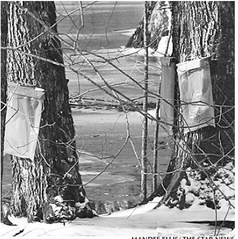Changing standards, inclusion impact use of space at MASH


As I continue to talk with community members about the current high school, one question comes up a lot.
Are there more or fewer students at the high school now, than in the past? Followed by, if there are fewer, why do we need to consider adding space?
Great question. The answer is yes, there are fewer students today in the high school, than in the past.
The answer to the follow-up question is a bit longer, but here it is.
It starts with a Supreme Court decision from 1982 which focused on the Individuals with Disabilities Act (IDEA) and, the “free appropriate public education” (FAPE) mandate within it. Recently current U.S. Secretary of Education Betsy DeVos said, “The Supreme Court sent a strong and unanimous message: all children must be given an opportunity to make real progress in their learning environmentthey cannot simply be passed along from year to year without meaningful improvement. For too long, too many students offered IEPs, (Individual Education Plans) were denied that chance. I firmly believe all children, especially those with disabilities, must be provided the support needed to empower them to grow and achieve ambitious goals.”
In the past, public schools would often educate kids with special needs in one space. Rarely did kids with special needs move from class to class like other students. In some cases, the public schools didn’t even see these children; parents chose other avenues for them. Now public schools properly care for and educate all kids. Every effort to mainstream students with special needs with other students is a top priority. At the same time, we make sure to address specific needs. That takes space.
This might mean a sensory room, where students on the autism spectrum can go to use equipment to help them de-escalate or remain calm. It could be a space for kids that need speech or physical therapy. We also need room for licensed social workers and school psychologists, as well as mental health counselors to work with students. Our Spanish population is at about 6.2%, so we need staff and space to work with our ELL (English Language Learners).
Another good example of how things have changed is to look at how we help students who struggle with reading. We test them and really drill down to the specific reason a student might struggle reading at grade level. Maybe it’s a comprehension issue, or a decoding problem (unable to sound out words). Space is then needed to give students additional practice in reading.
Also when you look at best practice strategies for how teachers teach and students learn, our current classrooms were not designed for that. When you think back to your high school years, I would bet most of your classes were of the sit-and-get variety. You came in, sat down, took your notebook out and took notes as the teacher lectured for 45 minutes. Hopefully that didn’t happen in all of your classes, but I am pretty confi dent it happened in many of them. Today we want to get students working in groups, maybe on projects or just daily challenges. We want room to have them move around in a space that allows for this type of learning to take place. As an example, our average classrooms at Medford Area Senior High (MASH) are 780 square feet, they recommend 800 square feet. Our current lab spaces are 1,272 square feet and the recommendation for those is 1,400 square feet.
Preparing kids for a workforce that requires students to work with others and pull their weight as a member of a team, seems to be in their best interest. To do this more easily at the high school, structural changes and more room is needed. But don’t just take my word for it, come up and see for yourself. We offer tours at the high school every Tuesday and Thursday at 10 a.m. and 1 p.m.
— Pat Sullivan, district administrator
School corner



